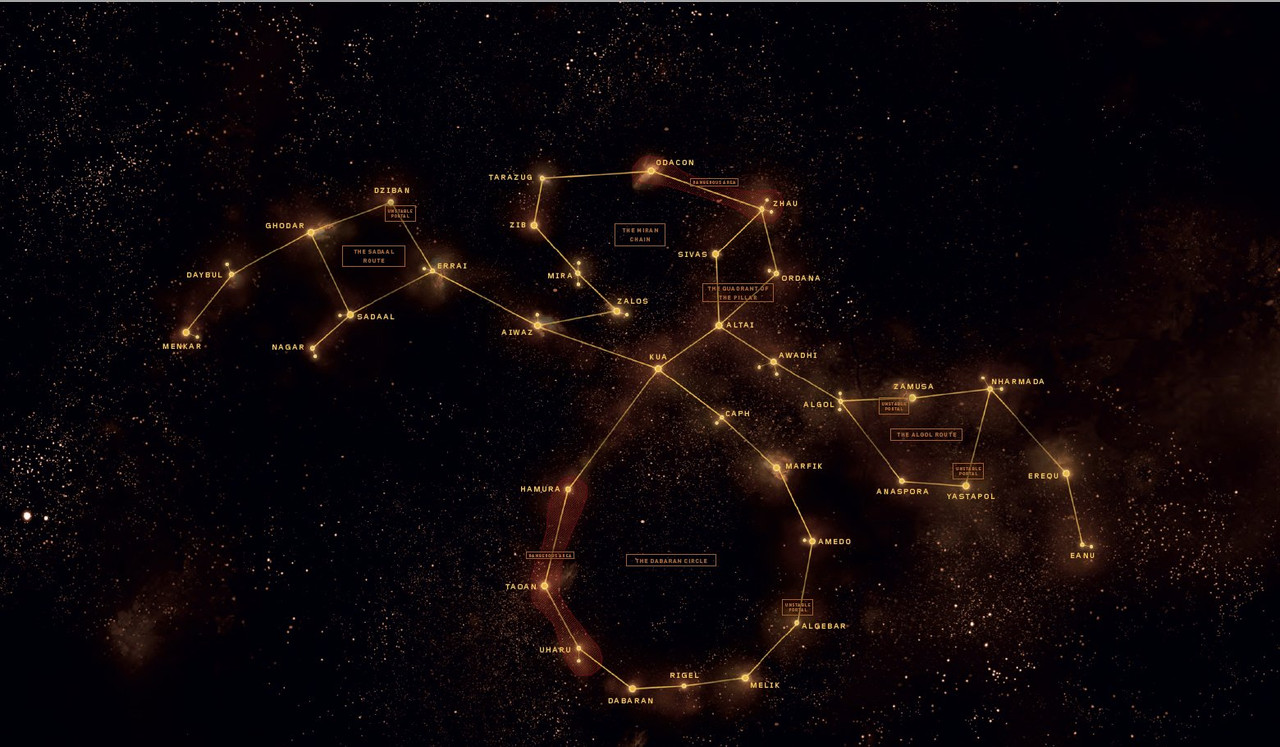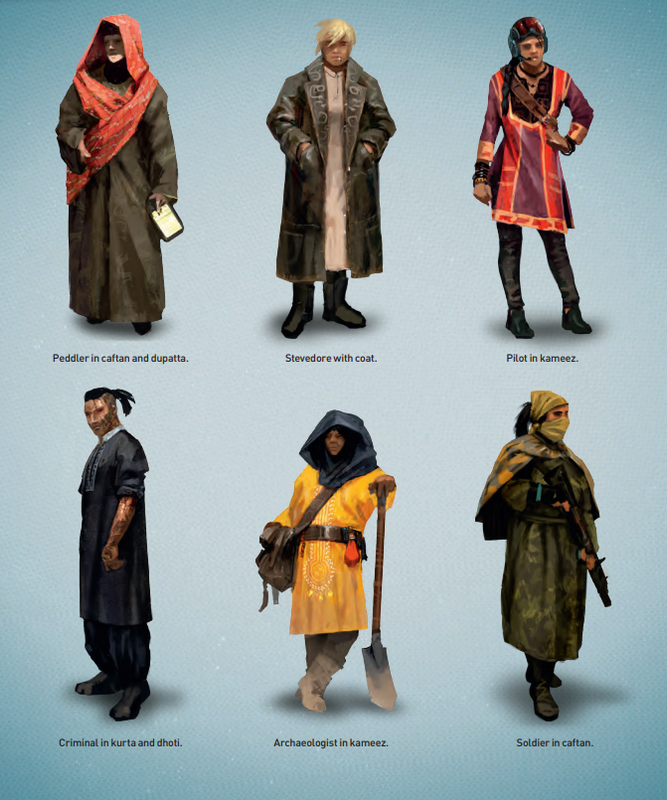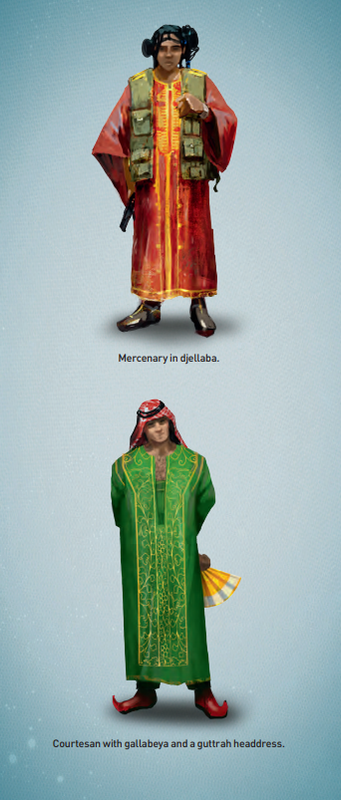Jun 9, 2020 2:42 am

Larger image of the Third Horizon
The Third Horizon consists of thirty-six star systems. All are probably inhabited, but one cannot be completely sure about a few of them. Some systems see traffic only by way of the portals. Only six systems have large populations: Algol, Dabaran, Kua, Mira, Zalos and Sadaal. The busier routes connect these six systems. The populations in the other systems vary in size depending on the number of planets, the luminosity of the stars and a range of other factors. Many systems house human life only in relay stations, small colonies, outposts or prospector camps – and corsair nests, of course.
The Coriolis Station is located in the Kua System.
THE PORTALS
The so-called portals are actually fields without any physical structure, made up of exotic particles and waves. Foundation professor Yaqub Fazari believes that the fields can be understood and described mathematically, and when this has been achieved, the people of the Horizon will be able to create new portals. However, this is all just a theory so far. When a ship passes through a portal, it is instantly transported to the next. Each field links two star systems together and jumps can be made both ways, simultaneously and without risk of collision. Jehna Karmathe, the noted Dabaran philosopher, teaches that no two things can happen anywhere at the same time in the universe, and that this explains why parallel passage is safe, but that level of philosophical detail is not something
normal skippers care about.
The Dangers of the Portals
One major problem with the star portals is that they aren't stable. Complicated algorithms and sequences are used to calculate the flux of the field and a good entry vector, and getting the math wrong can lead to the ship being torn apart or swallowed by the field, never to be seen again. A second problem is that no living creature can portal jump while awake without suffering serious neurological and mental damage. Stasis technology is required to provide some measure of safety for the crew during a jump. The factions are devoting massive funding into research about ways to get around this, but no one has succeeded so far. The last problem is the jump itself. No one knows exactly what happens in the moment when the ship makes the jump, but according to folklore, evil djinni and other entities hunt in the vicinity of the portals. There are stories about whole crews waking up from their frozen slumber possessed by unspeakable things from the Dark between the Stars.
The Portal Jump
Because of the dangers and the complicated calculations, preparing for a portal jump takes about a day. To facilitate easier jumping and to prevent accidents, portal stations have been constructed close to all of the portals. The crew of the portal station aids the skippers in calculating the size of the fields, making for quicker preparations, but at a hefty cost. Since several ships can use one entry vector, jumping in groups to share the cost is common. It is not certain exactly how many ships can use the same coordinates – it depends on the flux of the field and the will of the Icons – but no one wants to go last.
The portal stations are also small oases for bored crews and somewhere to make repairs. Larger stations even have vacuum docks for proper service. Poor skippers can wait at the station for other ships to come along to share the jump fee with, or jump solo – using self-calculated coordinates, or piggybacking on another ship. This is both risky and illegal, however. The solo jumper could end up at the edge of the field, collide with the other ships or get too close to their graviton exhausts.
Other Considerations
◆ FEES AND CONVOYS. For a price, the portal stations can calculate the portal fields’ movements and current size, making the jump relatively safe. The fees are usually high, between 5,000 and 10,000 birr, which means most skippers prefer to share the cost by forming convoys and jumping together. Portal jumps with coordinates calculated for a convoy gives a +3 to the pilot’s PILOT test.
◆ BULK HAULERS. Another way to jump is to wait for a bulk hauler to come by and jump alongside it. The haulers always get their coordinates and entry vectors on approaching the portal station, and tagging along with them is free, but requires an Easy (+1) PILOT test. Unfortunately, bulk hauler jumps are few and far between.
◆ SOLO JUMP. The broke skipper’s last resort is to have the ship’s crew itself make all jump calculations. This takes about four hours and requires a successful SCIENCE test. Each extra six reduces the time by one hour (to a minimum of one hour). The jump itself requires a PILOT test at -1.
◆ JUMPING BLIND. The truly desperate, often corsairs on the run and other criminals, can choose to jump blind, without any astronical calculations. This requires an unassisted PILOT test at -3.
THE ROUTES OF THE HORIZON
The routes through the Horizon were mapped a long time before the Portal Wars, both within and between systems. Some of them fell silent and were forgotten during the Long Night, but the Zenithian rebirth has opened them again, as the lifeblood of commerce is once again flowing in the Horizon. Below are descriptions of the most important routes and the problems and dangers that affect them.
The Algol Route
Many free traders work the route to Algol as the systems along the way are relatively safe from corsairs, and have yet to be exploited by the factions. The portals are stable and the stations are well manned, up until one reaches Algol and the surrounding systems. After Nharmada, things are much more quiet, and only the most stubborn or desperate crews push on all the way to Eanu.
The Dabaran Circle
The busiest route in the Horizon goes from Mira via Kua to Dabaran. The bulk haulers prefer the shorter route across Uharu, but since the rebellion there is pretty much constant traffic and the portal stations are often understaffed, and this way has become increasingly unsafe. The longer Amedo route past Algebar and Rigel is used primarily by free traders, but has also become dangerous since Almida, the corsair queen, has expanded her operations in Caph and Marfik.
The Miran Chain
The Miran chain is not the most traveled route in the Horizon, but perhaps the most important. The shorter route across Aiwaz and Zalos used to be the safest choice, as the portals in the Odacon system are still unreliable from damage they suffered during the Portal Wars. After a bulk hauler going the long way round disappeared when jumping from Odacon, the Consortium forced the Order of the Pariah to open their portal stations again. The Order's tangled bureaucracy still makes the jump across Zalos difficult – expensive customs fees and arbitrary restrictions often create a queue of ships waiting to jump to and from the system. Desperate free traders still prefer the Odacon route despite the dangers, as trade is good along the way in the Quadrant of the Pillar.
The Sadaal Route
The Sadaal route has the least amount of traffic of all the routes, probably because the largest hub along the way, Sadaal, only recently allowed off-world trade. Since the Consortium started factories on Sadaal, the whole route has come alive. The Sadaal portals are easy to use and the high frequency of Portal Builder finds in Ghodar, Daybul and Menkar attracts many explorers and archaeologists. Menkar is also home to the empty portal – a portal no one has returned from, said to connect to an unknown, Fourth Horizon.



